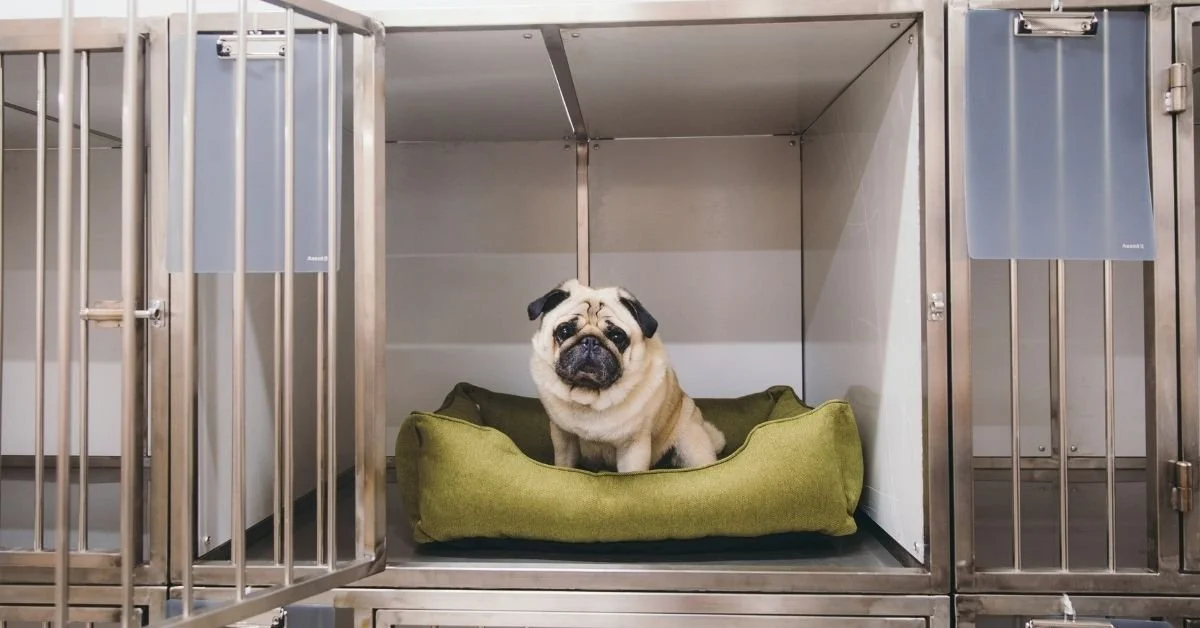The Global Impact of Fast Fashion on Workers and Communities
Explore the profound impact of fast fashion on workers and communities worldwide, and how we can shift towards a more sustainable and ethical fashion future.
Fast fashion has revolutionized the fashion industry, seducing consumers with its cycle of endless new arrivals, each promising style and novelty at astonishingly low prices. This business model thrives on the rapid translation of runway trends into high-street stores, significantly shortening the fashion cycle and encouraging a throwaway culture. However, the glittering allure of affordability and instant gratification masks a much darker side of the fast fashion industry, one that bears significant consequences for both the workers who produce these garments and the communities around the globe that are impacted by its practices.
The Hidden Costs of Fast Fashion
1. Exploitation of Workers: The cornerstone of fast fashion's profitability lies in its reliance on cheap labor. Garment workers, often in countries with lax labor laws and low wages, work in conditions that are far from humane. Long hours, insufficient pay, and the absence of job security define their daily reality. Despite their crucial role in the production process, these workers frequently live below the poverty line, unable to afford necessities for themselves and their families.
2. Unsafe Working Conditions: The pursuit of lower production costs and faster turnaround times frequently results in compromised safety standards. Tragedies like the Rana Plaza collapse in Bangladesh, which claimed over 1,100 lives, highlight the perilous conditions faced by workers. Yet, such incidents, while extreme, are symptomatic of widespread neglect in the industry. Lack of proper ventilation, exposure to toxic chemicals, and fire hazards are alarmingly common in garment factories.
3. Environmental Degradation: Fast fashion's environmental footprint is colossal, encompassing excessive water consumption, pollution, and waste. The industry is one of the largest consumers of water globally, with vast amounts required for dyeing and finishing processes. Chemical waste from these processes frequently contaminates rivers and soil, affecting both biodiversity and community health. Additionally, the fast fashion cycle encourages disposable behavior, leading to mountains of textile waste. Much of this discarded clothing ends up in landfills or is incinerated, releasing harmful toxins and contributing to greenhouse gas emissions.
4. Impact on Local Communities: Communities in fast fashion's shadow often suffer from environmental and economic strain. Water scarcity becomes a pressing issue as local water sources are diverted for textile production, affecting agriculture and daily living. The influx of cheap, imported garments can also undermine traditional textile and garment industries, eroding cultural heritage and local economies. Moreover, the cyclical nature of poverty is perpetuated, as workers remain trapped in exploitative jobs with no prospect for advancement or improvement in living conditions.
Advocating for Change
Understanding the full impact of fast fashion is the first step toward advocating for a more sustainable and equitable industry. Consumers can drive change by supporting brands that prioritize ethical practices, transparency, and sustainability. Advocacy for stronger labor laws, environmental regulations, and corporate accountability is crucial. Ultimately, challenging the fast fashion model requires a collective effort to value quality over quantity, longevity over novelty, and human dignity over profit.
Updates on Progress
Recent strides towards sustainability in fashion include:
Legislative Wins: France's new law requires unsold clothes to be donated, not destroyed.
Brand Initiatives: Adidas commits to using only recycled polyester by 2024, significantly reducing the demand for virgin plastics and the brand's carbon footprint.
By highlighting these issues and advocating for change, we can contribute to the transformation of the fashion industry into a force for good, where style and sustainability go hand in hand, and workers and communities are treated with the respect and dignity they deserve.
What is Fast Fashion?
Fast Fashion Defined: Fast fashion is an approach to the design, creation, and marketing of clothing that emphasizes making fashion trends quickly and cheaply available to consumers. This model relies on replicating trends from the catwalk or celebrity culture and turning them into garments in high street stores at breakneck speed.
Characteristics of Fast Fashion
Rapid Production Cycles: Unlike traditional fashion cycles, which tend to focus on seasonal changes, fast fashion brands may introduce new products multiple times within a single season.
Low Cost: By reducing the time taken from design to manufacture, these brands can significantly cut costs, often at the expense of quality and ethical labor practices.
High Volume: The model depends on producing a large quantity of items to constantly offer new selections to consumers, encouraging repeated purchases.
Driving Forces Behind Fast Fashion
Consumer Demand: The desire for affordable and trendy clothing, fuelled by social media and influencer culture, drives the fast fashion industry. Consumers' appetite for newness encourages brands to continually churn out new collections.
Globalization: Advances in technology and global supply chains have made it possible for fashion retailers to produce clothing in countries with lower labor costs and then quickly ship them worldwide.
Market Competition: Intense competition among clothing retailers leads to strategies focused on cutting costs and time to market, often at the cost of environmental and social sustainability.
Implications of Fast Fashion
Environmental Impact: The fast fashion industry is a major contributor to pollution, waste, and the depletion of natural resources. The lifecycle of fast fashion garments, from production to disposal, has significant environmental repercussions, including water pollution, the use of toxic chemicals, and high levels of textile waste.
Social and Ethical Concerns: The push for lower costs and faster production times often leads to exploitative labor practices, including poor working conditions, unfair wages, and child labor. The industry's reliance on cheap labor has also been linked to human rights abuses in manufacturing countries.
Economic Effects: While fast fashion may seem to democratize access to trendy clothing, it perpetuates a cycle of consumption and disposal that has broader economic costs, affecting the sustainability of the fashion industry itself and the economies of manufacturing countries.
Towards a Sustainable Alternative: Recognizing the drawbacks of fast fashion, there is a growing movement towards sustainable fashion, which seeks to balance the needs of the environment, society, and the economy. Sustainable fashion emphasizes transparency, ethical labor practices, and the use of environmentally friendly materials, aiming to create a more responsible and conscious approach to fashion.
Understanding fast fashion is critical not only for recognizing its impact on the world but also for informing our choices as consumers. By opting for more sustainable practices, we can help drive the industry towards a model that values people and the planet alongside profit.
The Human Cost of Fast Fashion
Exploitation in the Supply Chain: The fast fashion industry is notorious for its exploitation of labor, especially in developing countries where regulatory oversight is often lacking. Brands and retailers in search of lower production costs outsource manufacturing to countries where wages are minimal, and labor laws are not strictly enforced. This business model relies heavily on a workforce that, due to economic circumstances, has little choice but to accept whatever work is available, even under deplorable conditions.
Case Studies of Labor Abuses: Reports from countries like Bangladesh, Cambodia, and India reveal a grim picture of labor abuses. Workers, including a significant number of women and sometimes children, are often subjected to long hours, forced overtime without adequate compensation, and the denial of basic rights such as sick leave and safe working conditions.
Wage Discrepancy: The disparity between the living wage (the minimum income necessary for a worker to meet their basic needs) and the wages paid to garment workers is stark. In many cases, the wages are so low that workers struggle to afford adequate food, housing, and healthcare for themselves and their families.
Health Hazards Faced by Workers: The fast fashion industry's impact on worker health is both direct and profound. Workers are exposed to hazardous substances without proper protective equipment, leading to chronic illnesses and accidents.
Exposure to Harmful Chemicals: The use of toxic chemicals in dyeing and treating textiles poses serious health risks to workers. These chemicals can cause skin rashes, respiratory problems, and other long-term health issues. The lack of ventilation and protective gear exacerbates the danger.
Psychological and Physical Impact: The relentless pressure to meet unrealistic production deadlines also takes a psychological toll on workers, leading to stress, fatigue, and mental health issues. Physically, the demand for rapid production encourages unsafe working practices, resulting in accidents and injuries.
The Bigger Picture: The exploitation and health hazards faced by workers in the fast fashion industry are symptoms of a larger problem. The global demand for cheap, fashionable clothing drives these abuses, highlighting the need for a fundamental change in consumer behavior and industry practices. By choosing to support ethical brands, advocate for fair labor practices, and educate themselves on the real cost of fast fashion, consumers can contribute to a shift toward a more sustainable and just fashion industry.
The human cost of fast fashion is a stark reminder of the industry's dark side. As we become more aware of these issues, it's crucial to remember that our choices as consumers have the power to effect change. Supporting ethical fashion, advocating for workers' rights, and pushing for regulatory reforms can help mitigate the exploitation and health hazards faced by garment workers worldwide. Together, we can work towards a fashion industry that values people and the planet equally.
Community Impact
Local Environment Degradation
Pollution: The textile industry is notorious for polluting local waterways with toxic dyes and chemicals. In many garment-producing countries, regulations on waste disposal are lax, leading to untreated wastewater being dumped directly into rivers. This not only harms aquatic life but also affects the health of local communities that rely on these water sources for drinking, bathing, and agriculture.
Resource Depletion: The production of fast fashion consumes vast amounts of water and energy. Cotton farming, in particular, is water-intensive and often takes place in regions facing water scarcity. This unsustainable use of resources strains local ecosystems and competes with the community's needs.
Undermining Traditional Industries
The influx of cheap, imported clothing can have devastating effects on local artisans and small-scale manufacturers. These traditional industries often cannot compete with the low prices of fast fashion, leading to a decline in local craftsmanship and cultural heritage. As communities lose these economic foundations, unemployment rises, and unique skills are at risk of being lost forever.
Exacerbation of the Global Waste Crisis
Unsold and Discarded Garments: Fast fashion relies on overproduction, resulting in significant quantities of unsold clothes that often end up incinerated or dumped in landfills. This not only wastes resources but also contributes to pollution.
Second-Hand Clothing Flood: A substantial portion of used garments donated in developed countries is shipped to developing countries. While this might seem like a form of recycling, it often overwhelms local markets, undermining the demand for locally produced clothing and textiles. The excess that cannot be sold frequently ends up in landfills, where it can take hundreds of years to decompose, releasing methane and other greenhouse gases in the process.
Impact on Developing Countries: Many developing countries lack the infrastructure to manage the influx of waste effectively, leading to environmental and health hazards. Open-air burning of textile waste, a common practice in some areas, contributes to air pollution and associated respiratory problems among local populations.
Social and Economic Consequences
The social fabric of communities can be significantly affected by the environmental and economic impacts of fast fashion. Pollution and resource depletion can lead to food and water shortages, exacerbating poverty and forcing communities to migrate in search of better living conditions.
The decline of traditional industries not only leads to economic instability but also erodes cultural identity and pride. This loss is profound and often overlooked, as it affects the social cohesion and heritage of communities.
Towards a Solution
Highlighting these issues is not merely about casting blame but about fostering a deeper understanding of the interconnectedness of our global community. By supporting sustainable fashion initiatives, advocating for stricter environmental regulations, and valuing traditional craftsmanship, consumers and policymakers alike can contribute to a more equitable and sustainable world.
Incorporating these details into your article will provide your readers with a comprehensive view of the multifaceted impact fast fashion has on communities and the environment, underscoring the urgent need for change.
Voices of Resistance and Change
Amidst the challenges posed by the fast fashion industry, a growing movement of hope and resilience is emerging. Activists, non-governmental organizations (NGOs), and progressive brands are at the forefront of advocating for a fairer and more ethical fashion industry. This section delves into the various ways in which resistance is manifesting and how every individual can contribute to this wave of change.
Activists Leading the Charge
Activists around the globe are working tirelessly to bring attention to the injustices within the fashion industry. Through campaigns, protests, and social media, they are raising awareness about the exploitation of workers and the environmental damage caused by fast fashion. Notable figures such as Livia Firth, the founder of Eco-Age, and Ayesha Barenblat, the founder of Remake, exemplify how individuals can make a difference by advocating for sustainable fashion and transparent supply chains.
NGOs and Their Role
NGOs play a crucial role in supporting workers' rights and environmental sustainability in the fashion industry. Organizations like the Clean Clothes Campaign, Fashion Revolution, and the Worker Rights Consortium work on multiple fronts, from lobbying for legislative changes to supporting grassroots movements in garment-producing countries. They also provide resources for consumers to make more informed choices, fostering a culture of ethical consumerism.
Forward-Thinking Brands Paving the Way
A new wave of fashion brands is redefining the industry's approach to sustainability and ethics. Companies like Patagonia, Eileen Fisher, and Stella McCartney are leading by example, implementing practices that prioritize the environment and worker welfare. These brands invest in sustainable materials, fair labor practices, and circular fashion initiatives, proving that profitability and ethical practices can coexist.
The Power of the Consumer
Consumers wield significant influence in the fashion industry. Through conscious consumption choices, individuals can support brands that are committed to ethical practices and sustainability. This can range from buying second-hand clothes to choosing items made from sustainable materials or produced in fair-trade certified factories. By demanding transparency and accountability, consumers can push the industry towards a more ethical future.
Collaborative Efforts for Systemic Change
The movement towards a more ethical fashion industry is not just the responsibility of individuals or single entities; it requires collaboration across the entire supply chain. Initiatives like the Fashion Pact and the Sustainable Apparel Coalition bring together brands, suppliers, and other stakeholders to set collective goals and share best practices for reducing environmental impact and improving labor conditions.
Insight from Sustainable Fashion Designer, Eileen Fisher
“Sustainability is not a trend, it's a commitment.", says Eileen Fisher, a pioneer in integrating ethical practices within her fashion brand.
"Our approach is holistic, considering the environmental and human impact of every garment we produce. From using sustainable materials to ensuring fair wages for workers, we're proving that fashion can be both beautiful and kind to the planet and its people.”
Photo courtesy of wwd.com (Women’s Wear Daily)
The voices of resistance and change within the fashion industry are a testament to the power of collective action. By supporting activists, NGOs, and ethical brands, and making conscious choices, consumers can contribute to a significant shift towards sustainability and fairness. It's a call to action for all of us to become part of the solution, creating a fashion industry that respects both people and the planet.
The Path Towards a Sustainable Future
Innovation in Sustainable Practices
Eco-Friendly Materials: Highlight the shift towards materials that have a lower environmental impact, such as organic cotton, bamboo, hemp, and recycled fabrics. Emphasize the importance of reducing water usage, chemical dyes, and waste in fabric production.
Recycling Technologies: Discuss advancements in textile recycling that enable the repurposing of existing materials into new garments, reducing the need for virgin resources. Mention innovations like chemical recycling processes that break down fabrics at the molecular level, allowing for a higher quality of recycled material.
Circular Economy Models: Explain the concept of a circular economy, where products are designed and used according to principles of reuse, repair, remanufacturing, and recycling, minimizing waste. Illustrate how some brands are adopting business models that encourage product returns for recycling, offering repair services, or renting clothes to extend their lifecycle.
Regulation and Governmental Policies
Labor Rights Protection: Stress the need for stronger regulations that ensure fair wages, safe working conditions, and reasonable working hours for garment workers. Discuss the role of international labor organizations and trade agreements in enforcing these standards.
Environmental Standards: Call for comprehensive policies that mandate environmental protections in the fashion industry, including restrictions on pollutants, guidelines for sustainable resource use, and requirements for waste management. Highlight the potential for governments to lead by example, through purchasing sustainably produced uniforms and textiles.
Collaboration Across the Industry
Industry-wide Cooperation: Underline the importance of brands, manufacturers, and designers working together to share best practices, innovate sustainable solutions, and set industry standards that prioritize sustainability.
Engaging Consumers: Discuss how education and transparency can empower consumers to make informed choices. Mention initiatives like labeling schemes that provide information on a product’s environmental footprint or apps that track a brand’s ethical practices.
Cross-sector Partnerships: Encourage collaborations between the fashion industry, technology companies, non-profits, and academia to drive forward research, development, and implementation of sustainable practices.
Reimagining the Industry's Relationship with People and the Planet
Propose a holistic approach where the fashion industry not only addresses its immediate impact on the environment and workers but also contributes positively to societal and environmental challenges. For instance, supporting reforestation efforts or investing in community development projects in manufacturing regions.
The Power of Consumer Choices
Reiterate the significant role consumers play in this transformation. Encourage readers to support ethical brands, participate in the second-hand economy, and advocate for change through their purchasing power and public discourse. Remind them that each choice made is a step towards a more sustainable and just world.
Data and Statistics
The fashion industry's impact by the numbers:
Water Consumption: The industry is one of the largest consumers of water globally.
Carbon Emissions: Responsible for 10% of annual global carbon emissions.
Waste Generation: Produces over 92 million tons of waste each year.
These statistics underscore the urgent need for the fashion industry to adopt more sustainable practices.
Discover Your Fashion Footprint
Welcome to the "Discover Your Fashion Footprint" quiz! Have you ever wondered about the impact your wardrobe has on the planet and its people? This quick quiz will help you understand more about your fashion habits and their environmental and social implications. Plus, get personalized tips on how you can make more sustainable choices. Let's get started!
Scoring System:
Mostly As: High Fashion Footprint
Mostly Bs: Moderate Fashion Footprint
Mostly Cs: Lower-Moderate Fashion Footprint
Mostly Ds: Low Fashion Footprint
Results and Personalized Tips:
-
Your shopping habits have a significant impact on the environment and workers. Consider buying less frequently and choosing sustainable brands. Explore second-hand shops and clothing swaps to refresh your wardrobe in an eco-friendly way.
-
You're on the right track, but there's room for improvement. Try to prioritize sustainability when you can, and think about the lifecycle of your clothes. Donating and recycling are great, but reducing consumption is key.
-
You're making conscious choices about your fashion consumption, which is great! Keep educating yourself about sustainable practices and try to buy from ethical brands that align with your values.
-
Congratulations, you're a sustainability champion! Your choices are making a positive impact. Keep leading by example, and consider advocating for sustainable fashion within your community.
As we draw the curtain on our exploration of fast fashion, its profound impacts on the planet, its people, and the burgeoning wave of change sweeping across the industry, we are reminded of the power vested in our choices. The journey through the dark alleys of exploitation and environmental degradation, contrasted with the beacon of hope ignited by sustainable practices and ethical consumerism, underscores a pivotal narrative: change is not only possible; it's underway.
The stories of individuals like Anika, insights from pioneers like Eileen Fisher, and the stark realities mirrored in our data and statistics collectively paint a picture of an industry at a crossroads. It is an industry ripe for transformation, with each of us holding a piece of the puzzle to complete the picture of a more sustainable, ethical, and compassionate world.
Our "Discover Your Fashion Footprint" quiz is more than a tool for reflection; it's a call to action. It beckons us to reassess our fashion habits, to choose paths less trodden but more rewarding for the earth and its inhabitants. It's an invitation to be part of a movement that dresses not just our bodies but also our consciences in the fabric of sustainability and ethical integrity.
As we move forward, let us carry the lessons learned and the insights gained with a sense of responsibility and optimism. Let's champion the cause of sustainable fashion not as a trend but as a timeless principle guiding our choices. Together, armed with knowledge and a shared vision for a better world, we can turn the tide, one garment at a time.
The shift towards sustainable fashion is more than a mere change in industry practices; it's a cultural evolution towards greater awareness and respect for our planet and each other. As consumers, advocates, and humans sharing this Earth, our collective actions can weave a new narrative for fashion—one that tells a story of hope, resilience, and renewal.
Thank you for joining this journey. Let's continue to inspire and be inspired, challenging the status quo and embracing a future where fashion is fair, sustainable, and inclusive. The path forward is ours to shape, and together, we can make a difference.
-
At The Green Muse, our mission is to inspire a movement towards sustainable living and conscious consumerism. We believe in the power of informed choices and the impact they have on our world. Our commitment to you, our readers, is not just to offer curated insights into sustainable fashion and lifestyle but to do so with the utmost integrity and transparency.
To ensure that the information we share is both timely and relevant, we utilize a range of advanced AI search platforms. These tools assist us in gathering the latest research, insights, and trends within the sustainability sector. It is important to us that you know the foundation of our content is built upon the comprehensive data and analysis these AI technologies provide.
However, we also acknowledge the limitations and evolving nature of AI-generated information. While these platforms are powerful, they are not infallible. Our team diligently cross-references this information with credible sources to ensure accuracy, but we encourage our readers to engage critically with the content we provide.
We pledge to continuously strive for accuracy, relevance, and reliability in everything we publish. Our aim is not just to inform but to empower you to make choices that align with our shared vision for a sustainable future. We invite you to join us in this journey, armed with knowledge, to shape a world that benefits all.
Transparency is the cornerstone of trust. Therefore, we openly share our process with you, our valued readers. By understanding the tools and methods behind our content, we hope to reinforce your confidence in the information we provide. Together, let's forge a path towards a more sustainable and conscious world.
The Green Muse is more than a blog; it's a call to action for meaningful and responsible living. Thank you for trusting us as your guide on this journey.
-
Welcome to The Green Muse, where our journey in sustainable fashion and conscious consumerism is not just a passion, but a way of life. As part of our commitment to transparency and integrity, we want to inform you about the presence of affiliate links in some of our content.
What Are Affiliate Links?
Affiliate links are special URLs that track the referrals from our website to product or service providers. When you click on these links and make a purchase, we may receive a commission at no additional cost to you.
Our Promise to You
Every product or service we promote is carefully vetted for quality and sustainability. Our affiliate relationships do not influence our content; instead, they support our mission to provide you with the best in sustainable living. The trust you place in us is paramount, and our recommendations are always genuine and aligned with our core values.
Your Role in Shaping a Better World
By choosing to shop through our links, you're not just buying; you're participating in a movement for responsible, meaningful living. Together, we can make a global impact that benefits all.
Thank You for Your Support
Your trust in The Green Muse means everything. Thank you for joining us on this journey. Remember, every purchase you make is a step towards shaping a better, more sustainable world.
-
While we strive to keep all information current and relevant, the dynamic nature of our affiliate partnerships means that occasionally, some links in our articles may expire or no longer be accessible, through no fault of our own.
This is part of the evolving landscape of sustainable fashion and lifestyle, where brands and products are constantly adapting.
We encourage you to continue your journey toward ethical and sustainable practices by using these articles as a starting point. As you explore, feel free to seek out alternative options that align with your principles and aesthetics, keeping the spirit of conscious consumerism alive.
-
We're passionate about bringing you visually captivating content that complements our commitment to sustainable living and conscious consumerism. We need to note that the stunning images enhancing our articles are sourced from Pexels, Unsplash, Getty Images, and Canva – platforms we admire for their vast collections of free-to-use photographs. While we cherish the beauty these images add to our narratives, we acknowledge that the copyright and ownership rights belong solely to their talented creators. We don't claim any ownership; instead, we celebrate and encourage our community to explore the work of these artists further. Join us in supporting their incredible contributions to the world of visual storytelling.










What does your yoga gear say about your practice? Gayo’s sustainable mats and wellness essentials invite you to align movement, intention, and care for the planet in every breath.